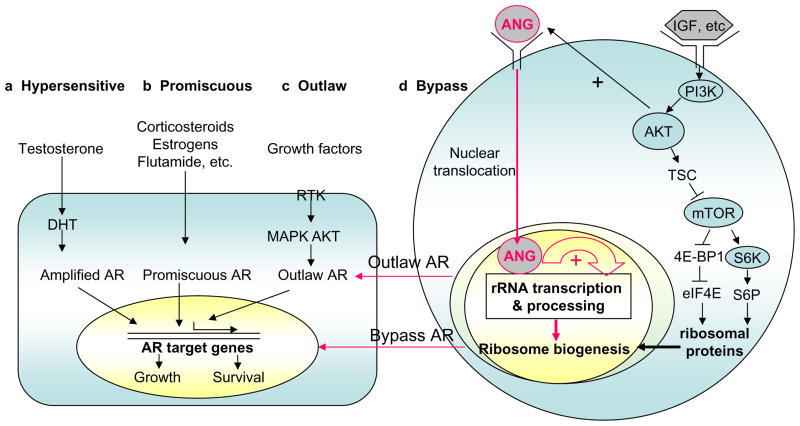Fig. 2.
Possible pathways to androgen independence and the involvement of ANG. Left panel, androgen-independent but AR-dependent pathways. (a) In the hypersensitive pathway, more AR is produced, or AR has enhanced sensitivity, or more testosterone is converted to the more potent DHT. (b) In the promiscuous pathway, the specificity of AR is broadened so that it can be activated by non-androgen molecules. (c) In the outlaw pathway, receptor tyrosine kinases (RTK) are activated and AR is phosphorylated by AKT or MAPK, producing a ligand-independent AR activation. Right panel, (d) Bypass pathway and the proposed role of ANG. IGF and other growth factors, or PTEN deficiency activate PI3K-AKT-mTOR pathway to enhance ribosomal protein production but it is unclear how rRNA is proportionally increased. ANG is known to be constitutively translocated to the nucleus of androgen-independent prostate cancer cells where it enhances rRNA transcription. Recent work has shown that upregulation of ANG and constitutive nuclear translocation in prostate cancer cells, especially in androgen-independent cells, result in an adequate supply of rRNA that is normally controlled by androgen-AR axis, thus enabling the cells to grow in the absence of androgens and AR.

